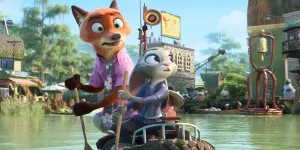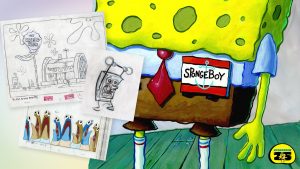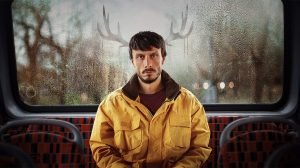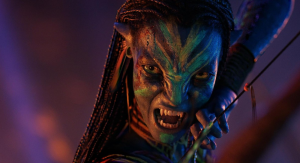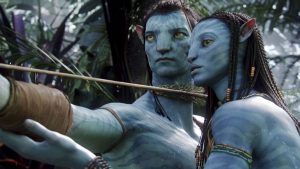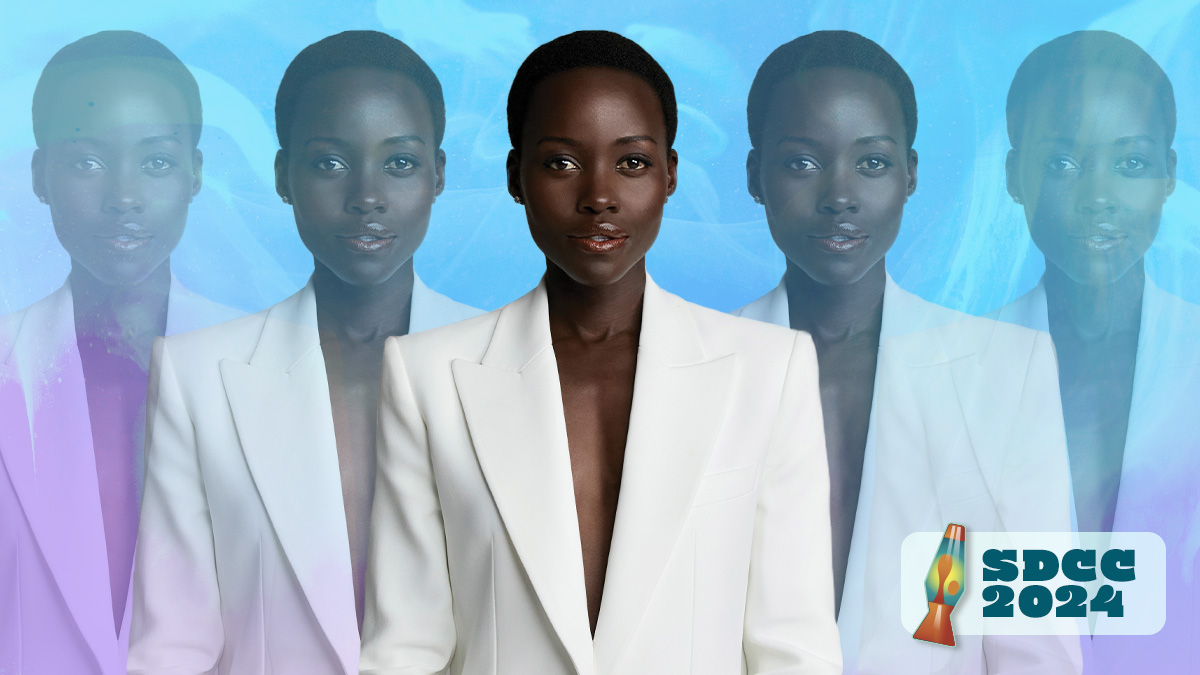
This article appears in the new issue of DEN OF GEEK magazine. You can read all of our magazine stories here.
How can somebody sound like they’re running if they don’t breathe? This is the sort of question Lupita Nyong’o had to ask as she was recording the voice of Rozzum unit 7134, the titular wild robot in The Wild Robot.
“We did a scene where Roz was running through a field, and I realized, “Oh my God, Roz doesn’t have breath! So how do I perform her running with no breath, which would have been the default if I was performing a living being?” Nyong’o remembers. “We had a debate about what running sounds like for a robot. You have to find a way to intensify your voice without doing the breathing you would do for a living being. It was fascinating to do.”
The Wild Robot is a story about a robot who finds herself surrounded by animals when her shipping crate is washed ashore on an island after a shipwreck, but Nyong’o was drawn to the very human messages it delivers.
“I read the book, and I loved its allegory,” she says of Peter Brown’s original children’s story. “It’s about the importance of self-actualization and being more than you thought you were meant to be.”
Of course, “being more than you were meant to be” is a common theme for movies, even movies about robots, but Nyong’o argues The Wild Robot goes a step further.
“It’s also about the importance of community. The individual is very much informed and inspired by the community they come from,” she explains. “The idea that to self-actualize is to separate from others is a folly. It can mean embracing the collective and expressing it uniquely, and I loved that.”
The Feelings of an Unemotional Being
If Roz were any other protagonist, this would be considered the emotional arc of the character. But Roz is a robot and behaves like a robot—not just a metal person. It was a unique challenge for Nyong’o as an actor.
“My big question was how can I evolve in a way that resonates with an emotional human audience without betraying the circumstances of my character being a robot?” Nyong’o says. “For me, as an actor, emotion is something I rely on to get the subtleties across. I try to figure out the emotional composition of my characters and here I was with a character who did not have that facility.”
To make sure she got the tone right, Nyong’o went through the script with the director, Chris Sanders, looking for moments that needed to be adjusted to reinforce that Roz was not an emotional being.
“Because Chris and Jeff [Hermann, producer] were so open to changing those moments, we got a lot clearer on showing how Roz learned things in a way that could make her seem like an emotional being. She learns behaviors and adapts so that she can express herself emotionally while not necessarily operating from an emotional place.”
In terms of showing how Roz learned those lessons, Nyong’o had no set, no costume, and no other actors to bounce off. The animated figure didn’t even have facial expressions.
“You have to convey everything through your voice,” Nyong’o points out. “So there are some challenging limitations, but it was also kind of liberating. You can do whatever you want in the booth. You can move your body however you want to get the effect you’re looking for in your voice.”
To communicate Roz’s arc, Nyong’o says she began with a tone of “programmed positivity,” emulating the chipper voices you hear from services like Alexa and Siri.
“It’s a bright voice. One of the ways I achieve it is to rely on my higher register, sending it through my upper resonate, brightening my eyes, and smiling as I do it!”
As Roz adapts to her new, more organic environment, she takes on more dimensions in her vocal posture until, at the end, she sounds a lot closer to Nyong’o herself. Although The Wild Robot presented Nyong’o with unique challenges, in many ways it was just like any other acting job.
“It starts with the same questions I ask of any character. Who am I? What do I want? How do I go about getting it? Once you know that, it informs the questions you ask of the director and of the process,” she explains. “I think the hardest thing was that so much of the performance was in the hands of the animators.”
The Core of the Job
It is a new way of working, but Nyong’o has been acting on screen since 2006, and she’s seen numerous new technologies and trends come into play.
“Well, I’ve definitely noticed more green screen,” she laughs. “There is so much more that people can do through computer graphics and manipulation, and that is useful for sure. We can be in Busan in Atlanta, and it can be immersive even on the set. I remember when I was part of Star Wars, I was impressed and amazed by how many practical effects were around me. Everything was three-dimensional and moving. All these aliens were animatronics. It was beautiful to be immersed in an imaginative three-dimensional world that had texture, and you could touch and explore it.”
In the Black Panther films, Nyong’o saw what was possible with digital technology.
“In some ways, it can feel sad, but in other ways, it is just a new way of approaching this imaginative work. The challenge in front of me is the same, whether it is all around me or on a green screen. All this technology offers me unique challenges to navigate and push against to stay true to the human story that I am telling. Things have advanced, I barely understand them, but my job remains the same, which is to breathe truth into the human experience.”
Nyong’o tries to find a range of experiences to breathe truth into. When looking at roles, diversity is one of the first things she looks for—she won’t do the same thing twice if she can help it.
“I look for roles that will teach me something new about myself or the world,” she says. “Those are the things that I consider. What are the ways the role will stretch me?”
An Animated Cast
She also prioritizes finding the right people to work with, especially considering how long a film takes, and how vulnerable it can make an actor.
“I feel strongly my creativity is not an infinite source, so I want to work with creative people who will nurture my creative spirit and not stamp out my light,” she says. This was a particular challenge with The Wild Robot, which recorded the dialogue for each of its actors separately, meaning that often Nyong’o never met her co-stars.
“I was shown some drawings, but there was very little that I saw to inform what I gave in the booth, so Chris [Sanders] would describe the scene and give me as much context as he possibly could. It was up to my imagination to keep those things in mind.” Nyong’o has worked in animation before, but this is the first time she has played the lead role in an animated feature film, adding a new layer of challenge. Fortunately, she was not alone.
“Chris Sanders is not just an incredible animation director, but an incredible actor’s director as well. He has such an incredible facility for inspiring a new thought without giving you line reading,” Nyong’o says. “He will share words with you that just spark a new thought, and it was so much fun to work with him because he’d get things out of me I didn’t even know I had in my pocket.”
As well as providing a good working chemistry as a director, Sanders also read for Nyong’o’s co-stars in the recording booth. Viewers might remember his voice as that of the alien Stitch in Lilo & Stitch, but his repertoire goes far wider than that.
“He gives it his all, he’s got such a dynamic voice,” Nyong’o says. “He understands all the characters he’s written, and he brings it. He was my scene partner, all the scene partners that I needed.” He also helped bridge the gap between Nyong’o and the other performers in the film, which was crucial to understanding Roz’s character.
“There was a line that Roz says, a turn of phrase she uses, but I remember saying we needed to figure out where she had learned it from. So that turn of phrase was given to Fink [the fox played by Pedro Pascal] earlier in the movie,” Nyong’o reveals. “When we were shooting that scene for Roz, I asked to hear the recording of Pedro Pascal doing it so that I could be informed by his inflection. I enjoyed that process of figuring out ways for Roz to adapt to this thing we experience as empathy.”
While Roz learns a new language throughout the movie, Nyong’o is also aware the same is true for the youngest members of the audience. “They unabashedly have access to rage and fear and glee and euphoria. They have big feelings and understand big feelings in a way that we shy away from as adults.”
Nyong’o, Sanders, and the animators worked to make sure that the language of the film remained accessible to children—which wasn’t necessarily the same as simplifying it.
“The choice of language was really important so that we did not alienate children with the breadth of vocabulary,” she recalls. “We didn’t want to dumb down the script because this is an opportunity for children to pick up new language. What was so fascinating was how the animators took care of making it understandable for children through their use of expression. There was the language of the page, the inflection put on it by the performer, and the expression the animators brought to it, all working together.”
The Wild Robot was a unique experience for Nyong’o, but she still has new things she wants to try.
“I am very keen to work in the comedic realm. Especially with the times we live in, life can be really scary right now, and it’s important to be reminded of joy and euphoria and the light,” she says. “I’m very keen to walk towards the light.”
The Wild Robot is out in theaters on Sept. 27.
The post How Lupita Nyong’o Found the Humanity in The Wild Robot (Exclusive) appeared first on Den of Geek.


